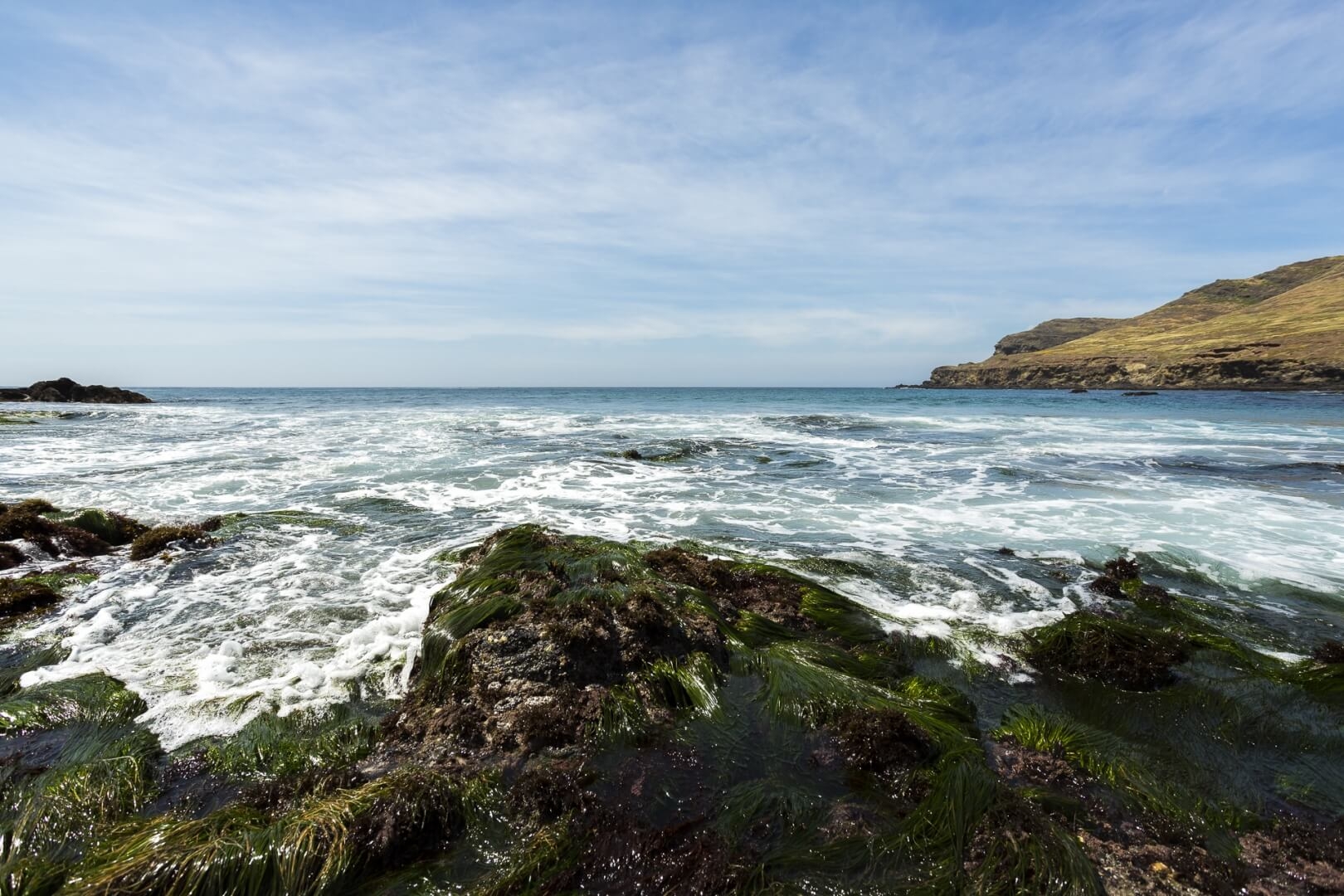- click to expand
▽Quantifying Plastics - Preserving Coral Reefs
- Investigating Acidification
- Reversing Overfishing
- Protecting Whales
 Roland Geyer Industrial ecologist
Roland Geyer Industrial ecologistBren School of Environmental Science & Management
Imagine an area 35 times the size of Manhattan, ankle deep in plastic waste — a mind-boggling 8 million metric tons.
That’s the amount of plastic likely to enter our oceans every year, according to research by industrial ecologist Roland Geyer. And it’s a drop in the bucket compared to the total amount of plastic ever manufactured — so his estimate could actually be low.
Scientists calculate that 80 percent of ocean plastic comes from the land, with most settling on the ocean floor. “Does plastic just sink to the bottom of the ocean and remain there forever without affecting the ecosystem?” asked Geyer, a professor at UCSB’s Bren School of Environmental Science & Management. “Or are there negative ecological impacts?”
He and other Bren School researchers are working to find answers. Bren students teamed with clothing manufacturer Patagonia to develop a protocol the apparel industry can use to better understand microfiber pollution. And in new research, Geyer measures the production, use and fate of all plastic ever made — numbers that can be used to revise the estimate of plastics in the world’s oceans.
Learn More ◥ Deron Burkepile Marine biologist
Deron Burkepile Marine biologistDepartment of Ecology, Evolution and Marine Biology
Providing food and shelter to a whopping one-quarter of all ocean species, coral reefs are the most diverse of all marine ecosystems. And in many places, they are in crisis.
Over the past two years, parts of Australia’s iconic Great Barrier Reef have lost 50 percent of their corals due to a phenomenon called coral bleaching.
When ocean temperatures rise above normal summer averages, corals reject the symbiotic algae that live in their polyps. If corals are without those algae for too long, they die. That’s coral bleaching in a nutshell, and it has a cascading effect.
“This big mass bleaching event has really made scientists think that the degradation of coral reefs is happening much faster than anticipated,” said Deron Burkepile, an associate professor in UCSB’s Department of Ecology, Evolution and Marine Biology.
If sea surface temperatures diminish, corals are less stressed; but stress management is a short-term solution. As Burkepile said, “Short-term measures won’t buy very much time if we don’t aggressively control carbon emissions and try to stabilize the global temperature.”
Learn More ◥ Gretchen Hofmann Marine biologist
Gretchen Hofmann Marine biologistDepartment of Ecology, Evolution and Marine Biology
It’s been called climate change’s evil twin — but is it?
When Gretchen Hofmann began studying ocean acidification a decade ago, it sure seemed so. Future conditions looked dire. Now, the outlook has improved and two bright spots are on the horizon.
Hofmann’s lab is investigating how kelp and seagrasses change seawater chemistry. Simply by conducting biological business as usual, these marine macrophytes are buffering future changes in ocean pH and creating refuges from ocean acidification.
Her team is also exploring maternal effects in sea urchins. Females in acidic urchin barrens produce eggs under stressful conditions. This creates tough genetic stock better equipped for a harsher ocean environment.
“This means we’ll want to conserve these genetic populations, which is ironic because it means protecting space that is not very nice,” explained Hofmann, chair of UCSB’s Department of Ecology, Evolution, and Marine Biology. While ocean acidification is inevitable, she noted, conditions on the open ocean will vary from the coast. “And the California coast holds places of hope,” said Hofmann.
Learn More ◥ Chris Costello Environmental and resource economist
Chris Costello Environmental and resource economistBren School of Environmental Science & Management
When it comes to the oceans’ fish populations, scientists agree: Their numbers are dwindling, and fishing is to blame.
In fact, UC Santa Barbara environmental and resource economist Christopher Costello characterizes the overexploitation of fisheries as one of the biggest ocean challenges of our time. Costello founded the Sustainable Fisheries Group, which uses tools from ecology and economics to determine sustainable fishery solutions that benefit oceans and people.
“It’s the small-scale coastal fisheries in the developing tropics that are declining,” Costello said, “which is tragic because they have immense importance for local food security and for local livelihoods.”
If these fisheries can harness best practices — good science, good data and a sound incentive system — from places that have largely reversed the effects of overfishing, they, too, could improve their catches.
“In the long term, fishing sustainably enables fishermen to increase their catch. And when fish stocks are restored and conserved, we can create more food on the planet,” said Costello.
Learn More ◥ Douglas McCauley Marine biologist
Douglas McCauley Marine biologistDepartment of Ecology, Evolution and Marine Biology
One of the greatest threats to marine mammals? Traffic.
With large ships an increasingly frequent presence in our oceans, collisions between vessels and whales are a growing problem. Reports of whales being victims of these “ship strikes” have gone up dramatically in the past 50 years.
Researchers estimate that at least 10 blue whales were killed every year during the late 2000s in the Santa Barbara Channel alone — a matter of major consequence for a species whose population today is a tiny fraction of its historic, pre-industrial whaling abundance.
Whale mortality is the focus of a new effort based at UCSB, where the Benioff Ocean Initiative has launched a project to find and develop innovative, science-based solutions to curtail ship strikes.
“These collisions are impacting some of the most endangered and spectacular whales on the planet,” said marine ecologist Douglas McCauley, director of the Benioff Ocean Initiative. “Shipping companies, marine biologists, fishermen, port authorities — everyone agrees on the value of developing smart new ways to find workable solutions.”
Learn More ◥